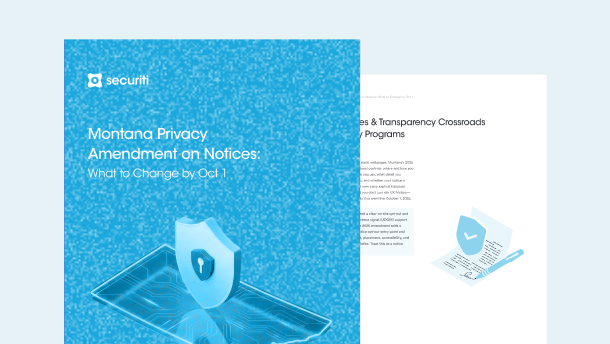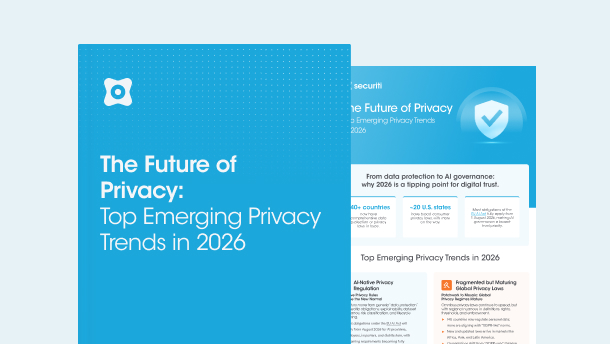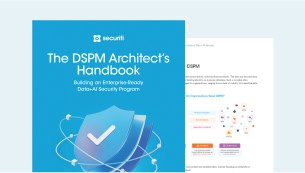Risk assessments aren’t new to the digital realm – but with approximately 402.74 million terabytes of data generated daily and regulations tightening their grip around an organization’s data handling practices, data risk assessments are no longer a choice but a legal requirement.
As data risks escalate, so does the need for data risk assessments. With cybercrime projected to cost the global economy more than $20 trillion, periodic data risk assessments are crucial to gauge the organization’s data security posture against evolving cyber threats.
According to the AI & Information Management Report, 64% of organizations today manage at least one petabyte of data, and 41% surpass that with at least 500 petabytes of data. With massive volumes of structured and unstructured data assets, dark data, and data residing in silos, conducting a data risk assessment is imperative before malicious actors target it.
What is a Data Risk Assessment?
A data risk assessment aims to identify, analyze, monitor, and mitigate vulnerabilities, enabling organizations to make informed decisions about their data security strategy.
It’s a comprehensive approach that identifies the types of data an organization collects, where data is stored (residency, on-premises, hybrid, and cloud environments), who has access to the data, with whom data is shared (internally and externally), and how that data is utilized.
Once the residency types (personal and sensitive) and other intricacies involving data assets are determined, the data risk assessment evaluates evolving threats. It assesses vulnerabilities to mitigate risks and establish a robust data risk posture.
Why is a Data Risk Assessment Important?
Data risk assessments are core to an organization’s data security posture management strategy. This is primarily because they provide organizations with transparency into their data assets and their current security standing (whether data is secured or there’s a risk of exposure), which might result in data breaches.
Here are a few additional reasons why it’s important to conduct a data risk assessment:
- Gain comprehensive visibility into data assets to discover and classify sensitive data and adopt relevant strategies to protect sensitive data,
- Precisely identify misconfigurations or high-risk issues that might lead to a breach,
- Identify exposed data to ensure compliance with evolving regulatory requirements,
- Enhance an organization’s data security posture management initiatives, and
- Avoid noncompliance penalties.
Components of a Data Risk Assessment
A data risk assessment comprises several crucial components, including:
a. Identify and Classify the Data Categories
The primary approach is to identify and classify data categories (personally identifiable information such as full name, driver’s license number, email address, house address, social security number, and financial information) and classify data based on its sensitivity (public, internal, confidential, restricted) to strategically map data flows both internal and external.
b. Identify Risk Vectors
To represent your organization's threat score, identify and assess evolving risks (internal and external), including vulnerabilities, third-party risks, encryption status, access controls, and vulnerable endpoint devices.
c. Conduct Risk Analysis
Conduct a quantitative and qualitative risk rating to determine which avenues are most susceptible to risk. Define risk criteria and categorize risk as low, medium, or high to prioritize remediation efforts accordingly.
d. Establish Controls
Review current security measures and assess where additional security measures are necessary. Once identified, implement the necessary security controls (encryption, access control, firewalls, etc.) to protect sensitive data.
e. Monitor and Document
Implement a real-time monitoring system that proactively assesses your security posture against evolving threats and periodically conducts data risk assessments. Document the entire process to communicate learnings across the organization.
You can’t protect what you can’t see. The same is true of data. You risk your organization’s data stores without comprehensive visibility into data assets.
a. Define Assessment Scope
Initiate the assessment by identifying what databases, files, and systems are being assessed, why the assessment is being conducted, and what regulations apply to the data.
b. Identify and Classify Sensitive Data
Identify and classify sensitive data to strategically inventory data (collected, processed, stored and shared). Apply sensitivity labels and map data flows to gain a holistic view of data points.
c. Identify Potential Vulnerabilities and Threats
Identify any possible vulnerabilities and threats that could impact your organization’s data. Both internal threats (employee errors, poor access controls, misconfigurations, legacy models, outdated software, inferior encryption) and external threats (cyberattacks, social engineering attacks, third-party risks) should be cautiously assessed.
d. Prioritize Risks
Determine the potential impact of risk and prioritize high-risk data that, if breached, would be catastrophic for your organization. Priority should be given to system-wide misconfigurations, sensitive data in a bucket without encrypted guardrails, ex-employees who still hold administrator rights to your data assets, etc.
e. Develop a Risk Mitigation Strategy
Identifying vulnerabilities is one thing; mitigating is another. Implement robust risk mitigation measures that ensure data security, and notify the relevant authorities and impacted individuals via prompt incident response plans.
f. Document Assessment Results
Onboard a real-time monitoring tool that performs periodic data risk assessments and proactively assesses your security posture against evolving threats. To share lessons learned throughout the organization, document assessment results that may be helpful to other teams.
g. Assess Applicable Regulations
Be mindful of the fact that you’re operating in an era heavily regulated by data protection laws. Assess which laws apply to your organization and ensure compliance with applicable laws and any upcoming laws that may potentially apply to you. With several laws mandating risk assessments, ensuring compliance isn’t only a best practice but a legal requirement.
Automate Data Risk Assessment with Securiti
Protecting sensitive data requires a robust identification and classification tool. Securiti Data Risk Management automation enables organizations to intelligently monitor high-risk data and assess risk scores for every data asset, asset location, or personal data category. Key features include identifying data risk hotspots, customizing risk scores, eliminating risk blind spots and much more. Securiti Risk Assessment enables organizations to assess third-party privacy risks.
Securiti is the pioneer of the Data Command Center, a centralized platform that enables the safe use of data and GenAI. Securiti provides unified data intelligence, controls, and orchestration across hybrid multi-cloud environments. Large global enterprises rely on Securiti's Data Command Center for data security, privacy, governance, and compliance.
Request a demo to learn more.











































